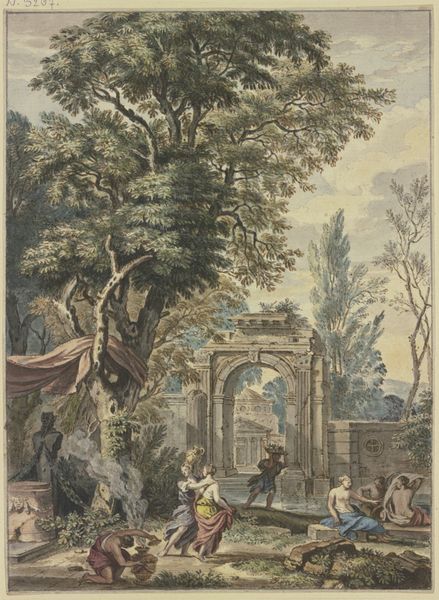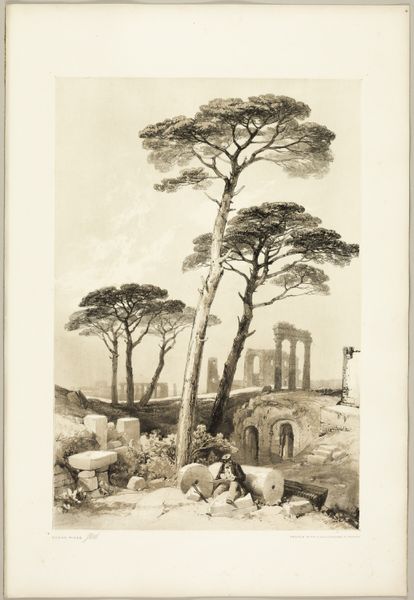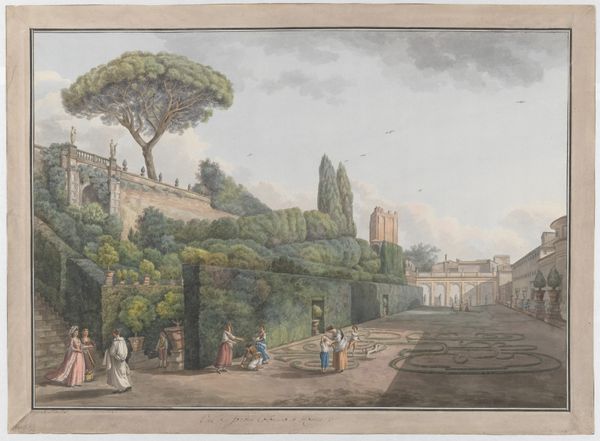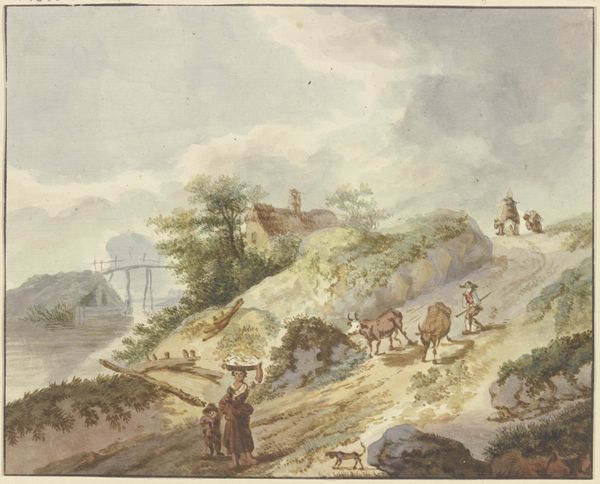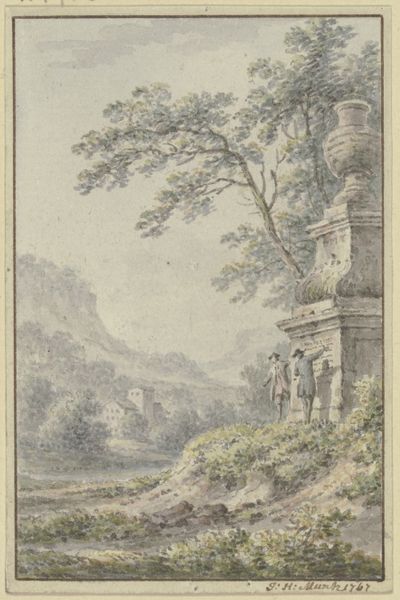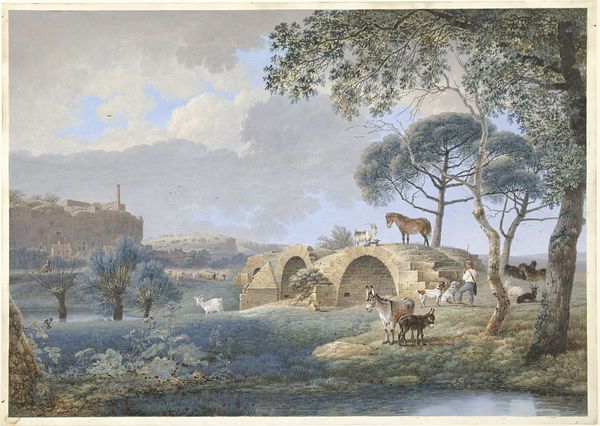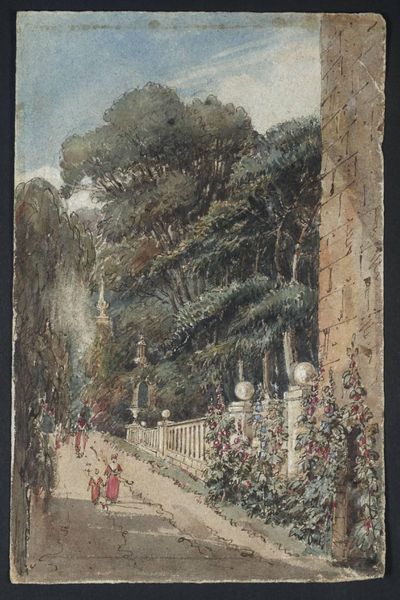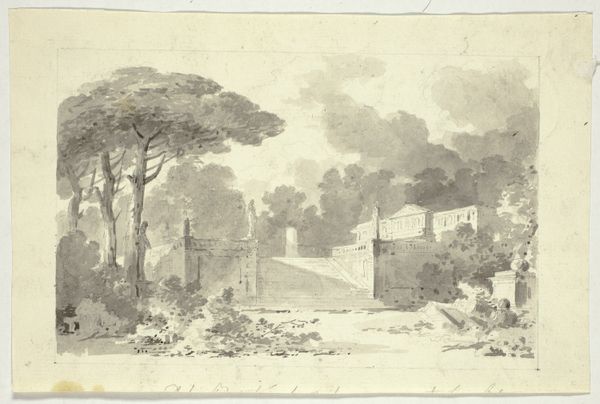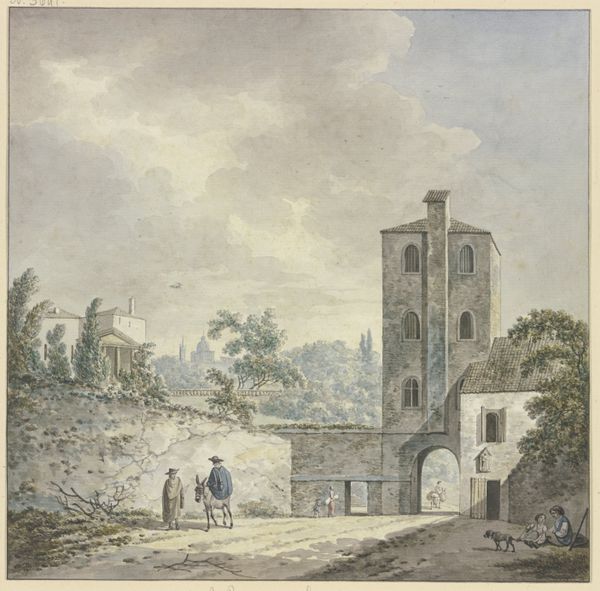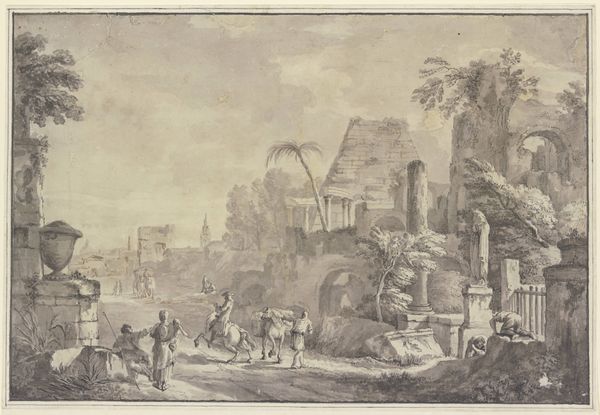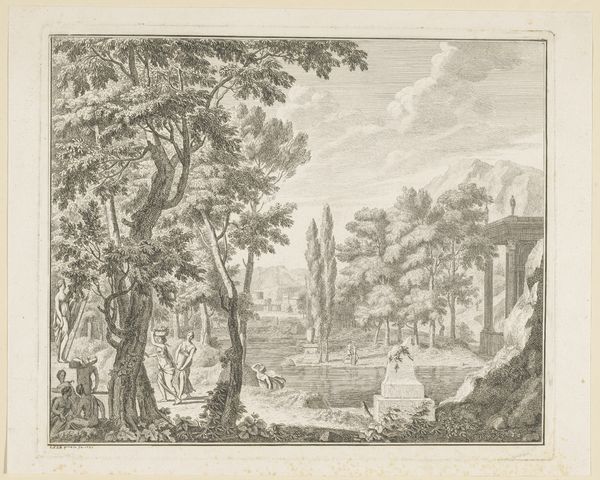
Road Leading to the Grotto of Posillipo 1765 - 1794
0:00
0:00
Dimensions: 8 7/16 x 5 13/16 in. (21.5 x 14.8 cm)
Copyright: Public Domain
Curator: Here we have "Road Leading to the Grotto of Posillipo" by Claude Louis Châtelet, created sometime between 1765 and 1794. It’s a watercolor, pen, and ink drawing currently housed here at the Metropolitan Museum. Editor: The light is captivating! A sort of hazy, dreamlike atmosphere pervades the scene. I’m drawn to the texture, or lack thereof; there’s something almost ephemeral about it. Curator: Châtelet's work often reflects the influence of the Grand Tour and the burgeoning interest in picturesque landscapes. The drawing itself served a specific market, catered to the tastes of wealthy tourists who desired souvenirs of their travels. It embodies the romanticization of the Italian countryside, crafted for a public eager to consume idealized versions of these landscapes. Editor: The composition is very intentional, too. That striking tree, strategically placed. The artist employs soft washes to define shapes, creating a sense of depth that's quite effective. Those foreground figures are rendered with far more precise lines to draw the viewer into the heart of the scene. Curator: Posillipo, then as now, was a popular destination. We have the visual markers: picturesque buildings, ancient Roman ruins…even the costumed figures provide local flavor to amuse the Grand Tourists who commissioned or bought images like this. Notice, though, how this isn’t so much an accurate rendering as it is a constructed fantasy, subtly reinforcing the social hierarchy. These travelers didn't just want to see Italy, they wanted to possess it visually. Editor: And Châtelet provided that ownership through carefully controlled chromatic harmony. It's like looking through a tinted lens, idealizing what is captured. This piece stands as a testimony to technique and tone more than the real place. Curator: Yes, it highlights how artists like Châtelet contributed to a cultural phenomenon, shaping perceptions and desires around travel and the consumption of visual imagery. The painting presents more than just scenery, but power. Editor: Thinking about it, even the muted tones add a layer of nostalgic fantasy, separating it from immediate reality. A sophisticated creation. Curator: Indeed. This work serves as a lens through which we can examine the historical context of artistic creation and consumption. Editor: Agreed. It is, fundamentally, a fascinating artifact of its time, not merely a depiction.
Comments
No comments
Be the first to comment and join the conversation on the ultimate creative platform.


